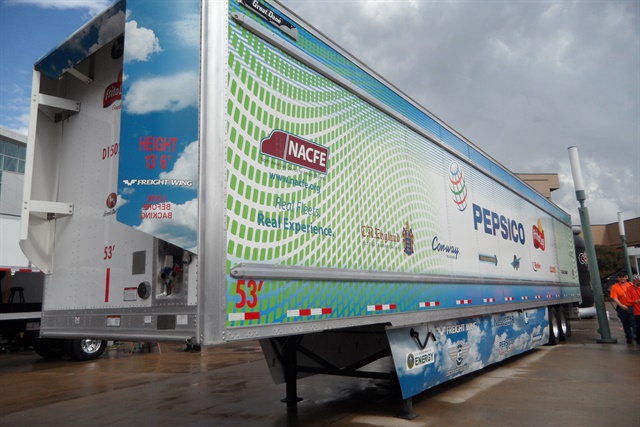Trailer Aerodynamics Not Overly Popular, Study Shows
Trailer aerodynamic devices have caught on, but it apparently took the California ARB rules to force most fleets to begin adopting them. Photo: Tom Berg
“>
Trailer aerodynamic devices have caught on, but it apparently took the California ARB rules to force most fleets to begin adopting them. Photo: Tom Berg
“>
Trailer aerodynamics comprise the least accepted type of fuel-saving methods, according to a study by the North American Council for Freight Efficiency. It appears that it took a government decree to push operators into it, and it will take another set of rules to force further adoption of drag-reduction methods for trailers.
Those are among the takeaways from the NACFE’s 2016 Annual Fleet Fuel Study. Participating were 17 large American and Canadian fleets, admittedly representing only 4% of the long-haul tractor-trailers on the road. And the adoption figures reflect companies, not the numbers of vehicles they have, NACFE said.
Some of the fleets are well-known and most have the resources to analyze results from various technologies to determine if they’re worth spending money on.
The study included 69 fuel-saving technologies that were grouped into seven categories: tractor aerodynamics, trailer aerodynamics, powertrains, tires/wheels, idle reduction, chassis, and fleet practices. Of those, trailer aerodynamics had the lowest acceptance rate, about 21% of the fleets surveyed.
Much more popular, with almost a 65% adoption rate, were tractor aerodynamics and low-rolling-resistance tires, the study showed. You know this is true if your memory extends beyond the turn of the 21st Century, maybe even back to the first Arab Oil Embargo of 1973. Roof-mounted air fairings began appearing on tractors in the mid-‘70s as fleet managers reacted to spiking oil and fuel prices. Tractors led every big rig into the speed-induced wind, so were obvious targets for improvement. (Easy-rolling tires came much later.)
A few thinking managers began using aero devices on trailers not long afterward. By the late ‘70s I was living in California and went through the second oil embargo of ’79. I recall seeing …Read the rest of this story
